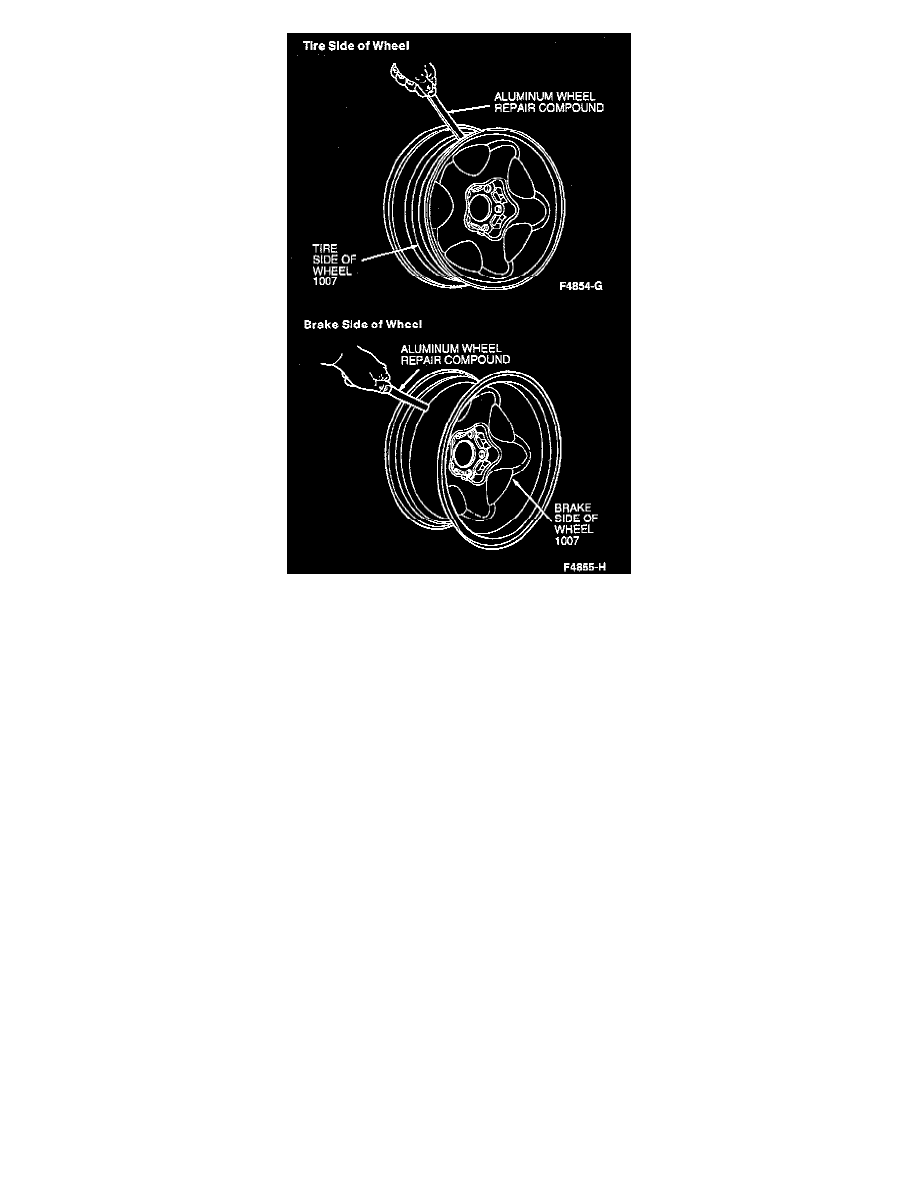Town Car V8-4.6L VIN W (1997)

5. Heat the prepared area with Rotunda Heat Gun 107-R0300 or equivalent or a propane torch until Aluminum Wheel Repair Compound
E7AZ-19554-A or equivalent meeting Ford specification ESA-M4G280-A flows. Apply the hot melt material over the prepared area using a
liberal flow and wiping action to ensure coverage of the leaking area. Service is most effective when heat is applied to the brake side of the rim
and sealer is melted by heat in the metal rim.
NOTE: Do not use a torch containing oxyacetylene.
6. Apply only enough heat to melt the sealer, then remove heat source. After servicing the leak, allow the wheel to cool until it can be handled safely.
CAUTION: Use caution when mounting the tire so as not to damage the sealer.
7. Index and assemble tire and wheel indexing tire mark to the valve. Inflate tire to the recommended pressure as indicated on the tire pressure decal.
8. Repeat Step 2 to verify service.
9. When the service is completed, inflate properly, balance the assembly and install on vehicle.
Maintenance
DESCRIPTION
Aluminum wheels have a protective coating to resist corrosion. Care should be taken to avoid damaging the wheel or corrosion may occur. Washing
them (do not use highly alkaline cleaning agents) when washing the rest of the vehicle will be enough to keep wheels looking good for many years.
Certain environments, as created by some operations, can lead to corrosion. Some of these are: salt, chloride compounds used for snow removal, dust
control and highly alkaline materials. When these conditions are encountered, the following practice is recommended:
1. Clean frequently with steam or high-pressure water from a hose. Use of a mild detergent will speed up the cleaning process.
2. When tires are removed, the entire wheel should be cleaned and inspected. For maximum protection, there are various types of coatings which give
good results. The following procedure is suggested:
SURFACE PREPARATION
1. Remove all the soil and oil from the wheel surface with either high-pressure steam or solvent. A suitable solvent would be mineral spirits.
2. Remove any adherent soil or oxidation products by using a soft bristle brush.
3. Clean the surface again with solvent, using mineral spirits to remove loose products.
Replacement
WARNING: NEVER RUN THE ENGINE WITH ONE WHEEL OFF THE GROUND, SUCH AS WHEN CHANGING A TIRE. THE
